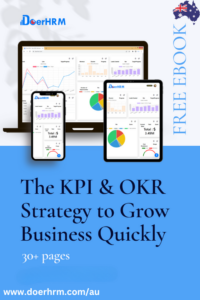As a team leader, have you ever gotten to know any KPI examples for team leaders? Have you ever tried implementing any KPI to improve the “softer” side of your role as a leader? In this article, we are going to share some KPI examples for team leaders. Keep reading to find out these KPI examples for team leaders!
Before we go into the KPI examples for team leaders, we should definitely get to know the meaning of KPI so that you can understand the KPI examples for team leaders better. So, what does KPI mean? A key performance indicator (KPI) means a mechanism used to represent how well the company is able to reach its business goals. The key result area alludes to the sector of the outcome within the business organization, for which the department or unit is responsible.
However, what do these KPI examples for team leaders mean to you? As a team leader, how important are KPI for you? Well, as a team leader, you own the key results for your team, meaning that you will probably have a handful of KPI examples for team leaders on your list that are the main metrics for your team’s success. For example, if you lead a sales team, you will probably have some key metrics around revenue and the number of deals closed.
Your team members would have their individual KPIs that roll up, but you likely own the total number for the team. For a product leader, you might have metrics around NPS scores or product adoption that you own, finance team leaders will have financial KPIs to measure performance for the employee effectiveness of their team, and so on in other cross-functional departments.
In addition to those key results of your team’s performance, you may also want to track these KPI for team leaders around your performance as a leader. Measuring these KPIs for team leaders will help you improve your skills in this important area. Updating status weekly on KPI for team leaders puts this key aspect of your role front and centre in your rhythm of work, some employee performance KPIs might be measured with another time frame such as monthly. These KPI for team leaders might be some of the most important metrics that you can develop to drive overall team performance and recognize top performers.
Now, we have finally come to the KPI examples for team leaders. It may help you to measure your team’s development. Let’s take a look at them!
Top 3 KPIs Examples For Team Leaders

Team Retention. Growing and keeping your top talent is key. You may want to track a KPI around turnover or retention on your team. Promotions from your team may be another good metric.
Employee Satisfaction or Pulse score. Some companies use employee satisfaction surveys or more frequent “pulse” surveys to gauge employee happiness; if you have data like this segmented for your team, it could be valuable. It may not be a helpful KPI to measure weekly; you may need to dig deep and find out what the leading indicators are to happiness on your team and measure that instead.
Team Health Index. This is a simple “gut-check” metric we use to gauge whether any team members are overloaded or feeling full. It helps leaders know who may have the bandwidth for additional work and who may need help (or when we may need to hire additional resources to share the workload.)
Start Tracking These KPIs As A Team Leader
You do not need to be tracking all of these KPI examples for team leaders; it would be too many. Rather, think about the results and behaviours you want to influence or need to improve and start measuring KPIs to move the needle. Your list might not include any of these KPI examples for team leaders, but hopefully, this list prompts your thinking on the kind of measures you can put on your KPI dashboard to help you improve the “softer” side of your role as a leader.
Measuring leadership is difficult so whatever leadership metrics you use it will help become a better team leader, so make sure that you start and adjust as necessary. Hope these KPI examples for team leaders can help you to improve the “softer” side of your role as a leader!









